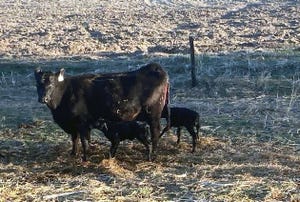May 26, 2022
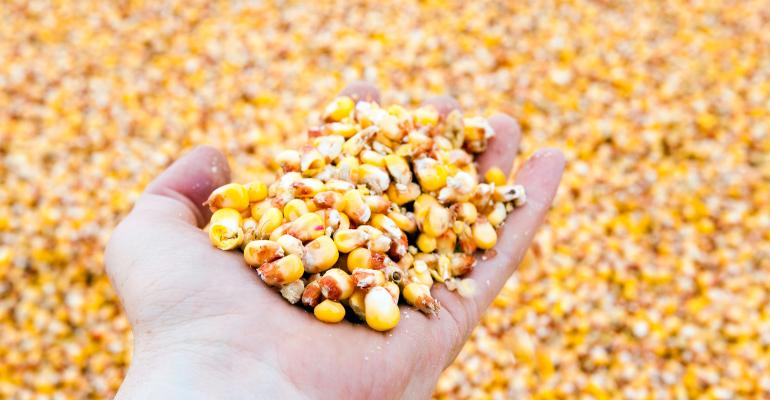
The United States Department of Agriculture Economic Research Service (USDA ERS) released its Feed Outlook on May 18, 2022. The report provides domestic and international estimates for the 2021/2022 marketing year and projections for the 2022/2023 marketing year based on the recent World Agricultural Supply and Demand Estimate (WASDE) report. This article summarizes domestic corn production and use.
Reduced Production
According to the May 12 WASDE, U.S. corn production for the 2022/2023 marketing year is expected to be four percent less than the 2021/2022 marketing year estimate. Fewer planted acres and poor weather conditions are to blame.
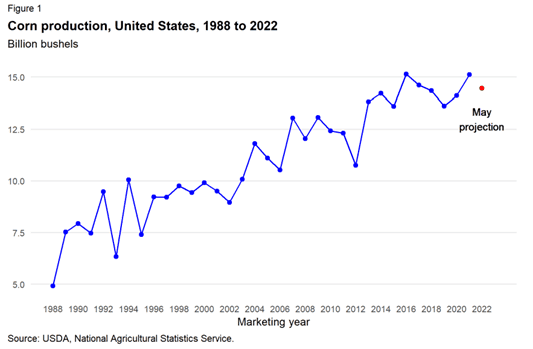
In the March Prospective Planting report from USDA, U.S. corn acres are expected to be four percent less this marketing year compared to the 2021/2022 marketing year. When USDA subtracts acres historically abandoned and used for silage, the total planted corn acres are estimated at 81.7 million. A clearer picture will be available after the June 30 Acreage report from the National Agricultural Statistics Service.
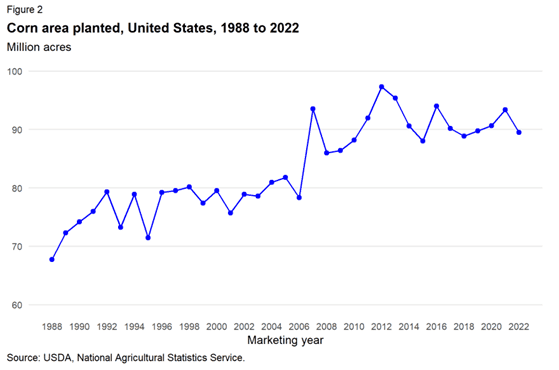
State-level forecasts also point to reduced corn acres within and outside the Corn Belt. See Figure 3 below for estimates.
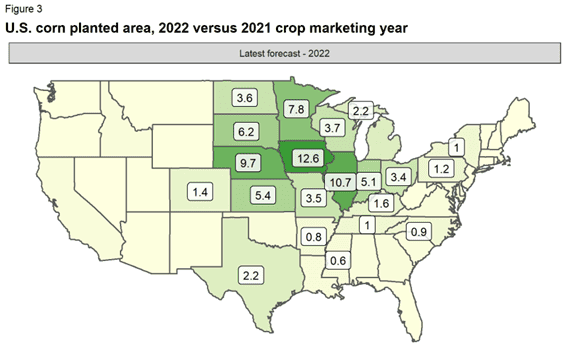
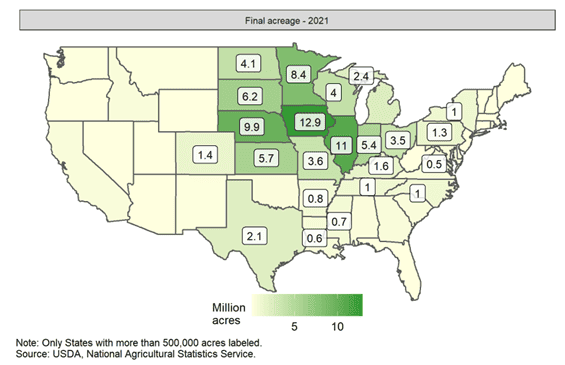
Lower Ending Stocks & Higher Prices
Because less acres are expected to be planted in the U.S., the Feed Outlook is forecasting reduced ending stocks and increased per bushel prices. The season-average corn price in the 2022/2023 marketing year increased $0.85 to $6.75 per bushel.
Implications for Beef Producers
These estimates are provided by USDA ERS using readily available data, including the most recent WASDE, Prospective Plantings, and planting progress reports across the U.S. There are several factors you can’t control that can change these projections.
Planting delays and uncertain growing conditions will mean feed pricing will continue to be a concern. Moving forward, I encourage you to manage those things you can control. Please consider:
Developing and evaluating budget scenarios
Developing price risk management plans to manage downside risks
Critically analyzing your input costs
Knowing your cost of production
Examining production practices
Evaluating available alternative feeds
Using pastures effectively and plan now for how you can expand the grazing season
Soil testing fields to determine soil nutrient levels and needs
Rely on your nutritionist, veterinarian, Extension professional, and other trusted advisors to develop a plan for future success.
Source: Ohio State University, which is solely responsible for the information provided and is wholly owned by the source. Informa Business Media and all its subsidiaries are not responsible for any of the content contained in this information asset.
You May Also Like
.png?width=300&auto=webp&quality=80&disable=upscale)
.png?width=300&auto=webp&quality=80&disable=upscale)
